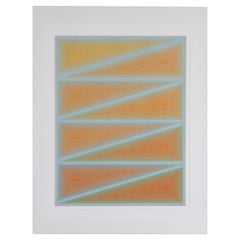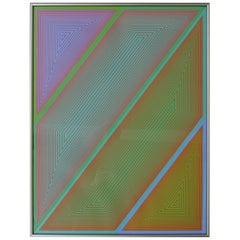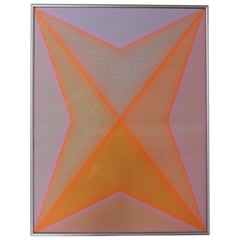Richard Anuszkiewicz Inward Eye
Vintage 1970s American Mid-Century Modern Prints
Metal
1970s Op Art Abstract Prints
Screen
1970s Op Art Abstract Prints
Screen
1970s Op Art Abstract Prints
Screen
1970s Op Art Abstract Prints
Screen
1970s Op Art Abstract Prints
Screen
Late 20th Century Op Art Abstract Prints
Screen
Recent Sales
Vintage 1970s German Mid-Century Modern Prints
Paper
Vintage 1970s German Mid-Century Modern Prints
Paper
Vintage 1970s German Mid-Century Modern Prints
Paper
1970s Op Art Abstract Prints
Screen
1970s Op Art Abstract Prints
Screen
1970s Op Art Abstract Prints
Screen
1970s Op Art Abstract Prints
Screen
1970s Op Art Abstract Prints
Screen
1970s Op Art Abstract Prints
Screen
1970s Op Art Abstract Prints
Screen
1970s Op Art Abstract Prints
Screen
20th Century Op Art Abstract Prints
Paper
1970s Op Art Abstract Prints
Screen
1970s Op Art Abstract Prints
Screen
1970s Op Art Abstract Prints
Screen
1970s Op Art Abstract Prints
Screen
1970s Op Art Abstract Prints
Screen
1970s Op Art Abstract Prints
Screen
1970s Op Art Abstract Prints
Screen
1970s Op Art Abstract Prints
Screen
1970s Op Art Abstract Prints
Screen
1970s Op Art Abstract Prints
Screen
1970s Op Art Abstract Prints
Screen
1970s Op Art Abstract Prints
Screen
1970s Op Art Abstract Prints
Screen
1970s Op Art Abstract Prints
Screen
1970s Op Art Abstract Prints
Screen
1970s Op Art Abstract Prints
Screen
1970s Op Art Abstract Prints
Screen
1970s Op Art Abstract Prints
Screen
1970s Op Art Abstract Prints
Screen
1970s Op Art Abstract Prints
Screen
Vintage 1970s American Mid-Century Modern Contemporary Art
Modern Abstract Prints
People Also Browsed
1970s Abstract Geometric Abstract Prints
Masonite, Screen, Graphite
Richard Anuszkiewicz Inward Eye For Sale on 1stDibs
How Much is a Richard Anuszkiewicz Inward Eye?
Richard Anuszkiewicz for sale on 1stDibs
“I’m interested,” Richard Anuszkiewicz (1930–2020) once said, “in making something romantic out of a very, very mechanistic geometry.” Anuszkiewicz sought to achieve this romance through works juxtaposing vibrant colors in geometric configurations. The perceptual effects he created helped define the American Op art movement.
Anuszkiewicz studied color theory at Yale under Josef Albers and was greatly influenced by Albers’s approach. “The image in my work has always been determined by what I wanted the color to do,” Anuszkiewicz explained in a 1974 catalogue. “Color function becomes my subject matter, and its performance is my painting.”
He departed from his mentor, however, in the pulsating, illusory qualities he gave his work. One of his most famous paintings, Deep Magenta Square (1978), although similar in composition to Albers’s “Homage to the Square” series, is distinctly Op art in the way the striations surrounding the central square seem to vibrate and jump off the canvas.
Anuszkiewicz spent his entire career exploring optical effects through the manipulation of line and color, producing spectacular and timeless pieces of art. “Working with basic ideas will always be exciting,” he said in 1977. “And if a color or form is visually exciting in any profound sense, it will be that way in 10 or 20 years from now.”
Browse a variety of paintings and prints by Richard Anuszkiewicz at 1stDibs.
A Close Look at Op-art Art
The Op art movement emerged in the 1960s, mirroring the counterculture of the time in its embrace of visual trickery, graphic shapes and bright colors.
Spreading across Europe and the Americas, the style — whose name is short for “optical art” — influenced advertising, fashion and interior design before fading in the early ’70s.
Op art remained significant, however, for artists and scientists interested in the nature of perception. And today, it’s seeing a resurgence of interest from collectors and interior designers.
Op artists played with the principles of perception, manipulating line, shape, patterns and color to create the illusion of depth and movement. They drew on and evolved methods developed by past movements, from Impressionism to Abstract Expressionism, to produce intense visual experiences.
All the Op artists shared a focus on the gap between what is and what we perceive. Each, however, had a distinct approach to the issue and a unique visual style.
On 1stDibs, find a collection of Op art that includes works by Josef Albers, Bridget Riley, Jesús Rafael Soto and more.
Finding the Right Abstract-prints-works-on-paper for You
Explore a vast range of abstract prints on 1stDibs to find a piece to enhance your existing collection or transform a space.
Unlike figurative paintings and other figurative art, which focuses on realism and representational perspectives, abstract art concentrates on visual interpretation. An artist may use a single color or simple geometric forms to create a world of depth. Printmaking has a rich history of abstraction. Through materials like stone, metal, wood and wax, an image can be transferred from one surface to another.
During the 19th century, iconic artists, including Edvard Munch, Paul Cézanne, Georgiana Houghton and others, began exploring works based on shapes and colors. This was a departure from the academic conventions of European painting and would influence the rise of 20th-century abstraction and its pioneers, like Pablo Picasso and Piet Mondrian.
Some leaders of European abstraction, including Franz Kline, were influenced by the gestural shapes of East Asian calligraphy. Calligraphy interprets poetry, songs, symbols or other means of storytelling into art, from works on paper in Japan to elements of Islamic architecture.
Bold, daring and expressive, abstract art is constantly evolving and dazzling viewers. And entire genres have blossomed from it, such as Color Field painting and Minimalism.
The collection of abstract art prints on 1stDibs includes etchings, lithographs, screen-prints and other works, and you can find prints by artists such as Joan Miró, Alexander Calder and more.


